*We are a reader-supported website. When you buy through links on our site, we may earn a small affiliate commission at no extra cost to you.*
Introduction
The art of creating teddy bears has a long history, in which there are basic standards, and in which each artist brings something of his own, unique. At first glance, teddy bear making may not seem so difficult, but it is if you know the secrets and tips. I would like to share with you the experience that I have collected and developed in this post as “25 Teddy Bear Making Tips”.
For The First Impression
To make the bear look harmonious choose high-quality fur fabric, the base of the fabric should not stretch to keep the form. Choose the length of the pile according to the size of your future bear. Plush with short or medium piles looks better on small bears. And on large ones, you can use almost any, as your imagination tells you.
Pay attention to color. It is very important. Light natural shades such as beige, milky, light brown, light gray, etc. look best. Black fur looks beautiful in real life, but it may be very difficult to photograph a toy made entirely of black fur. Multi-colored furs such as pink, green, blue, etc. suitable for fantasy characters, cute monsters, dragons, etc.
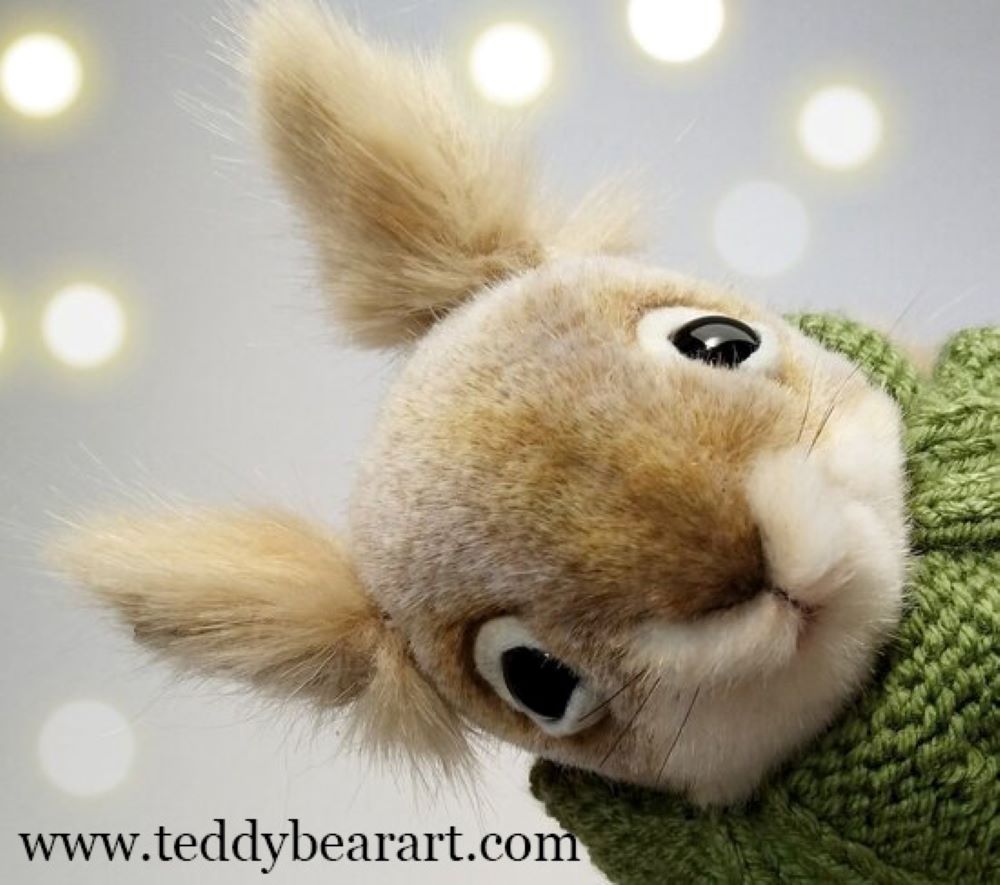
Pay special attention to the design of the bear’s muzzle. Try to make it as cute as possible if it’s a teddy bear, or as realistic as possible if you’re making a naturalistic toy. Double-check if the eyes and the ears are symmetric. Use pins to figure out where the eyes and ears will be.
Face, Eyes, Paws
To form the muzzle, as well as the body of a fluffy pile toy, a haircut is often necessary. I have tried many different scissors for cutting fur. The dog grooming scissors that I bought at the pet store seemed to be the most suitable.
Never pull hard glass eyes into their sockets to make an indentation. The eyes may crack and the toy will be damaged. The eye sockets and the muzzle of a bear are always pulled together with waxed thread BEFORE installing the eyes.
Better to use glass eyes than plastic. First of all, glass eyes look more alive. And the second reason is that plastic eyes are very sensitive. They can be easily damaged by glue if you make the eyelids for example.
It is very convenient to buy transparent glass eyes with black pupils. They can be dyed any color you want. Never use nail polish. Use acrylic paints, and after drying, be sure to cover it with a special coating for acrylic paints. Such eyes will forever retain their original appearance.
What can the paws of teddy bears be made of? They can be sewn from fabric, leather, or artificial suede. They can be molded from clay. They can be made by needle felting from sheep’s wool. They can also be made from silicone. This is the most difficult method and is mainly used to create realistic toys.
Here you can see paws made by me. In the first photo, they are made from fabric, in the second photo they are made from silicon, in the third photo they are needle felted from sheep wool and in the fourth photo they are made from clay.
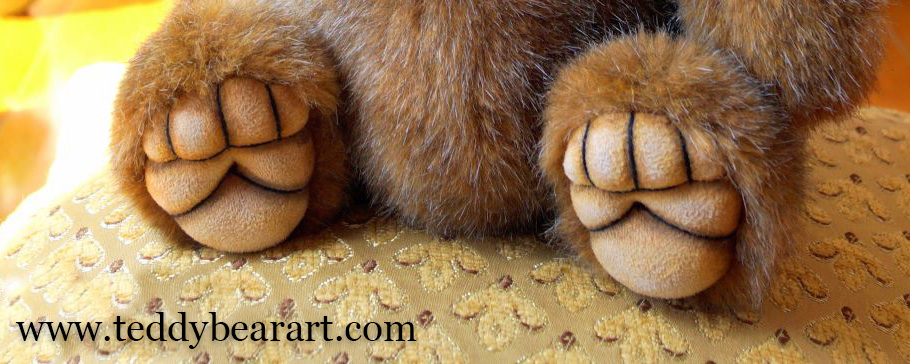
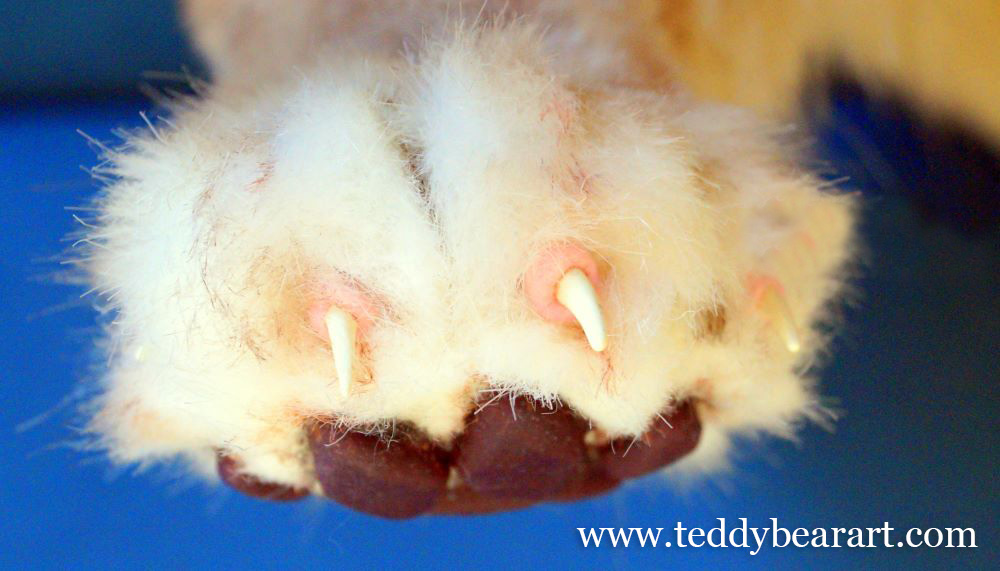
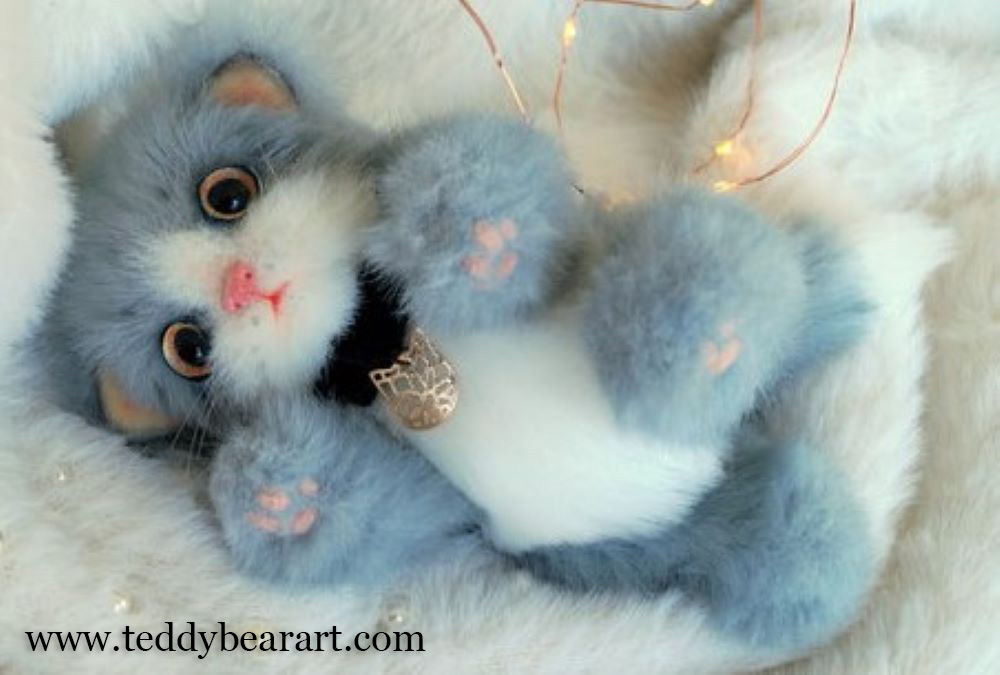
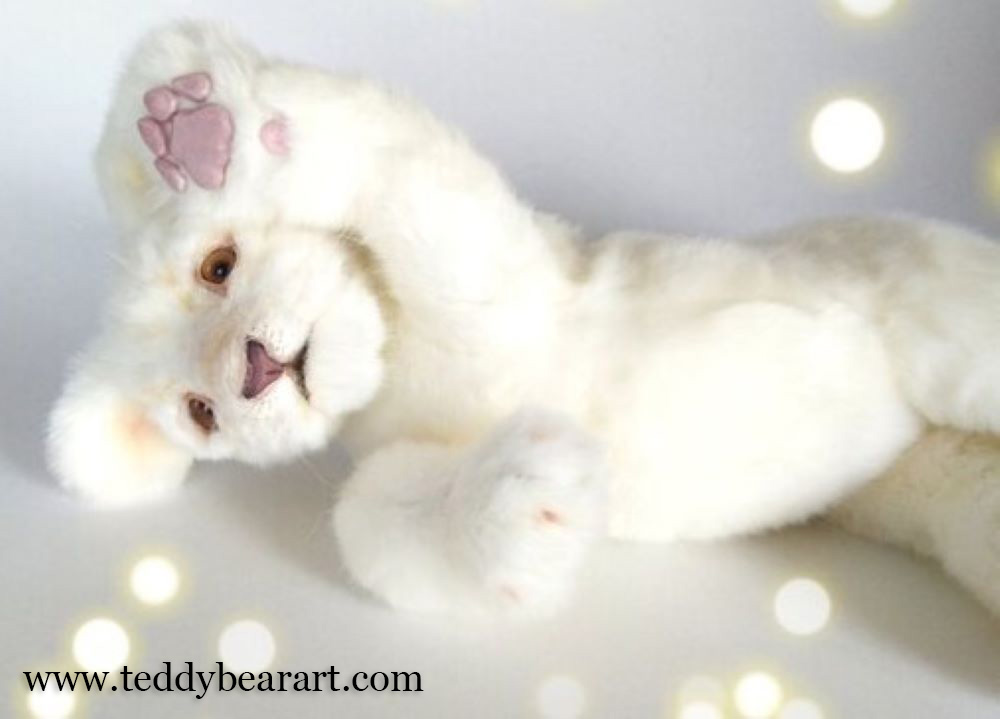
Stuffing
What and how to stuff teddy bears? For their stuffing usually used wood shavings, wood wool (sold in pet stores), synthetic filler in the form of balls (sold for filling pillows), and sheep wool.
Gently and tightly fill the bear, especially the head. Also, check areas such as the nose, neck, and paw tips to make sure there is no space. If you stuff a bear with sheep’s wool, then tear it off in small pieces and stuff it gradually.
To add weight to the toy, metal or glass pellets sewn into small bags are added to the body and/or limbs.
Always pull out fur stuck in the seams. This can be done with an awl or needle and then combed in different directions with a toothbrush or a small metal bristle brush. Such brushes are sold in the kitchen department or craft stores.
General Tips
If you do not have the opportunity to print the pattern, then simply attach the baking paper to the computer screen and carefully transfer the pattern to it.
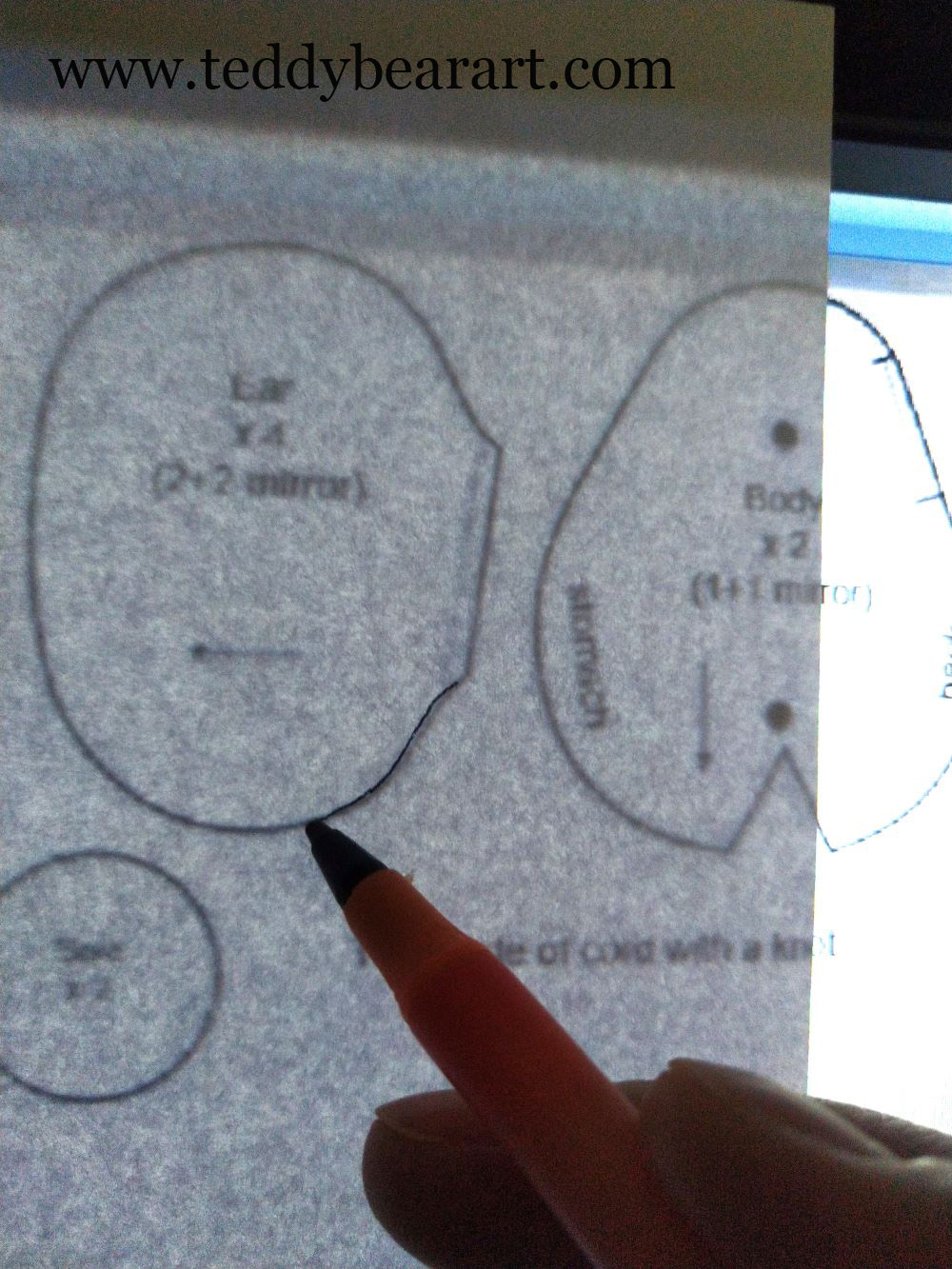
From one pattern, you can create several animals, each time changing the shape and proportion, lengthening and shortening the ears, tails, and noses. Change in the shape of the limbs and belly.
If the pile is crumbling heavily at the edges of the parts, then go over them with glue and let them dry. Then go on with your work. From personal experience, I can say that the most suitable glue is a special glue for fabric. It is white but becomes transparent when dry. Also, it was not expensive.
On the cut parts, cut off the fur near the seam. This is done so that the fur does not stick out of the seams on the finished bear, and they look beautiful.
Use a wooden sushi stick, tweezers, or pliers to turn the pieces inside out. Grabbing the part from the inside with them, gently pull.
Before attaching the limbs to the body, cut off some fur around the cotter pin in the area where the limb is attached to the body. Thus, the fit will be tighter and will not see a protruding pile.
When attaching the limbs to the body, try to tighten the cotter pins tight enough so that they do not loosen in the future. Otherwise, the bear’s limbs and head will hang out.
If you made a mistake with painting your bear with oil paints you still can save it. Use wet wipes for babies. With their help, I wipe off the paint that has not yet dried.
Painting and toning of toys can be done not only with oil paints but also with fabric paints, pastels, fabric markers, and airbrushes. Airbrush painting looks the most professional, but requires skill and experience and is therefore not suitable for beginners.
If you don’t know how to knit, but want your bear to have knitted clothes, you can sew such clothes from ready-made knitted fabric.
If you want your bear to hold something in his hand like a lollipop or lorgnette, use a hand sewing needle, which you insert into a lollipop stick, and stick the end into the bear’s paw.
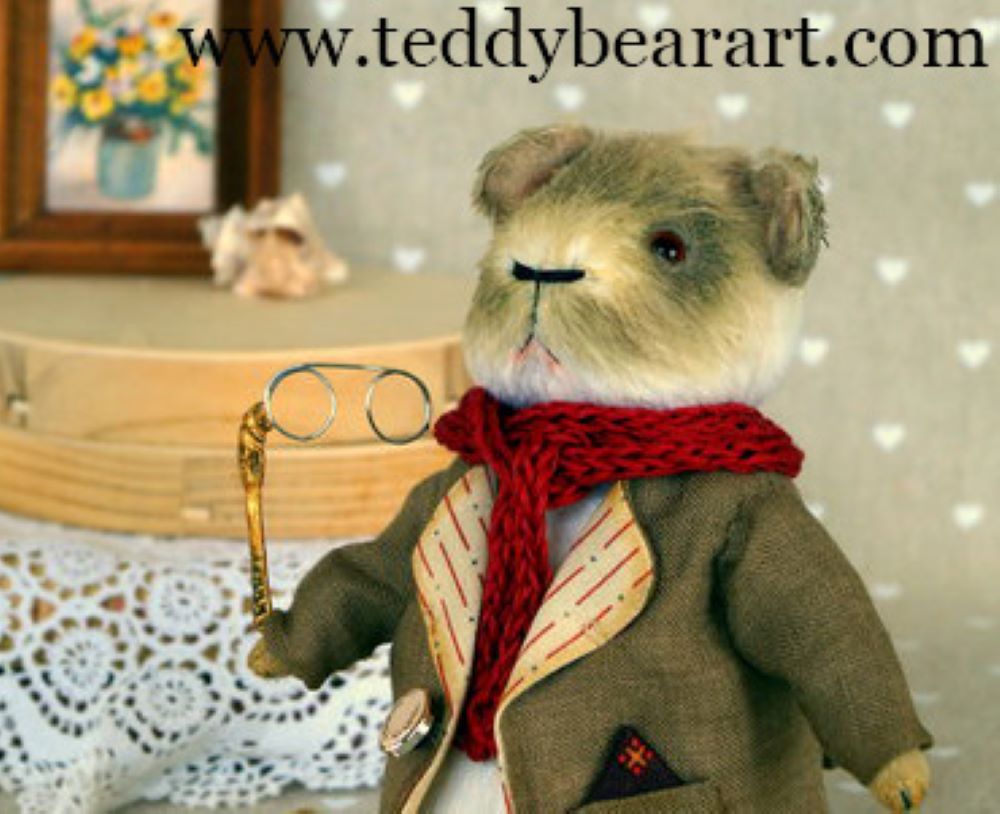
The illusion that the teddy bear is holding some object in its hand can also be created using two magnets, one of which must be inserted into the paw of the bear, and the second inside of the object that it will hold.
Avoid plagiarism. Even one such incident can permanently ruin your reputation as a master. Believe me, in the world of teddy bears, as in any other narrow industry, everyone knows each other.
To sell teddy bears online, you must be able to take great, near-professional photos. To do this, learn the basics of subject photography and video shooting, and master the basics of photo editing in applications on your phone.
Even if something went wrong in the process of creating a teddy bear, and it seemed to you that the bear was damaged, do not be upset and do not throw it away. Get creative and think about how you can change the image, and what can be added or removed to fix the image of the bear. After all, you spent so much time, effort, and materials!
Develop your creativity and taste: look at the works of other masters and illustrations of artists, and invent your characters. Collect seemingly unnecessary things and try to make something out of them.
If at the moment you are not sewing a teddy bear (for example, you are waiting for an order for a plush to arrive), you can sculpt noses, learn to embroider, knit, make claws, etc. In general, practice new skills and look for new information, do not waste time! This will be very useful to you in the future.
Conclusion
I shared my personal experience and observations and hope this will help you quickly understand and navigate making teddy bears and their friends.
I’m sure this list can be expanded further.
If you know of any other tips, ever need a hand, or have any questions, feel free to leave them in the comments below and I will be more than happy to help you out.
Read also about the benefits of having a teddy bear.
Join Us for Exclusive Content and Updates!
Are you seeking more inspiration, free patterns, tutorials, and tips for crafting adorable teddy bears? Join our Facebook page for exclusive updates, and don’t forget to subscribe through the Spotlight form towards the beginning of the article—this is your chance to access exclusive content and win teddy bear crafting supplies!
Let’s create together and share the joy of teddy bear art!

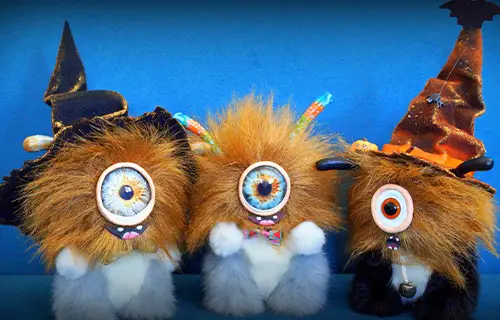
Hi Lovely Hanna
We use leather glue I bought it through Bear Essence in Victoria Australia. Just thought I would share this is what I use. So I mark the pattern out on the fabric backing with a pen that fades with washing and then I use the glue from the bottle on or around the line of the pattern, wait for it to dry (it is a little bit like rubber when it dries) and then I cut them out. It stops the small pieces from fraying at the edges. I will send you a photo when I find it.
Hi dear Liana,
Thank you for sharing this! That’s a great idea! I do not know about this glue. It’s seems to be nice way, because it’s like a rubber. Waiting to see the photo!